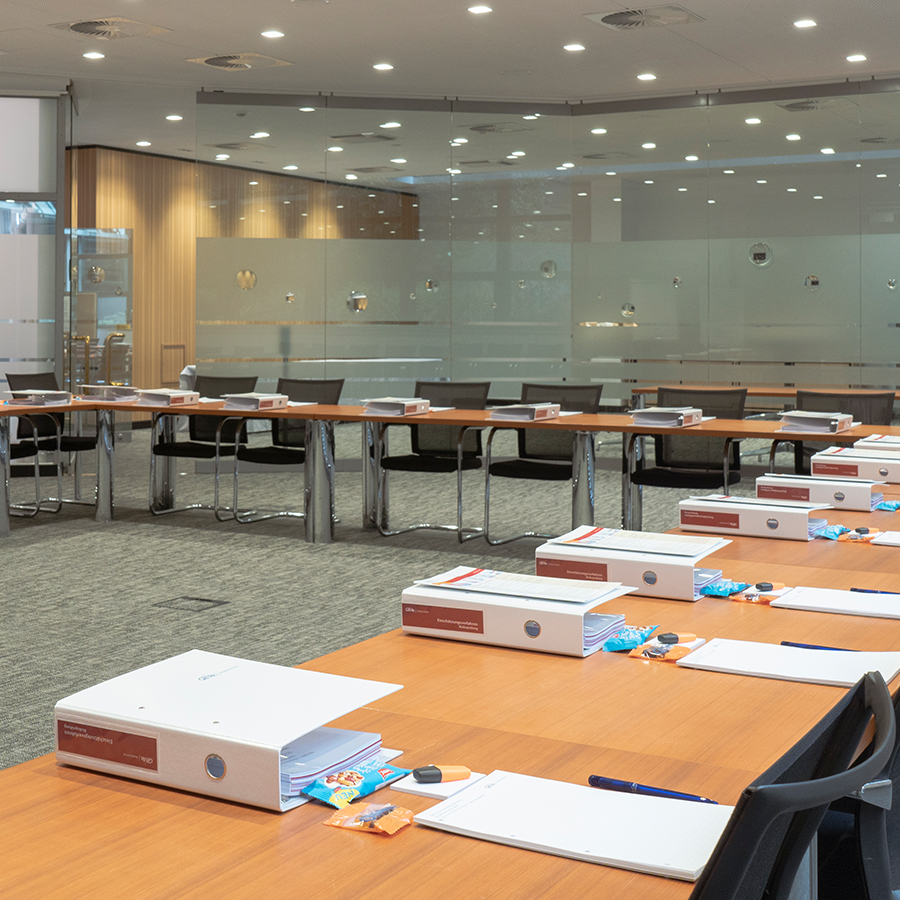-
Property & Casualty
Property & Casualty Overview

Property & Casualty
We offer a full range of reinsurance products and the expertise of our talented reinsurance team.
Expertise
Publication
High-Low Agreements Can Prevent Large Plaintiff Verdicts
Publication
Medical Marijuana and Workers’ Compensation
Publication
Secondary Peril Events Are Becoming “Primary.” How Should the Insurance Industry Respond?
Publication
Risks of Underinsurance in Property and Possible Regulation
Publication
Benefits of Generative Search: Unlocking Real-Time Knowledge Access
Publication
Battered Umbrella – A Market in Urgent Need of Fixing -
Life & Health
Life & Health Overview

Life & Health
We offer a full range of reinsurance products and the expertise of our talented reinsurance team.

Publication
Thinking Differently About Genetics and Insurance
Publication
Post-Acute Care: The Need for Integration
Publication
Trend Spotting on the Accelerated Underwriting Journey
Publication
Medicare Supplement Premium Rates – Looking to the Past and Planning for the Future U.S. Industry Events
U.S. Industry Events
Publication
The Future Impacts on Mortality [Video] -
Knowledge Center
Knowledge Center Overview

Knowledge Center
Our global experts share their insights on insurance industry topics.
Trending Topics -
About Us
About Us OverviewCorporate Information

Meet Gen Re
Gen Re delivers reinsurance solutions to the Life & Health and Property & Casualty insurance industries.
- Careers Careers
Public Nuisance – The Next Super Tort?

June 14, 2022
Glenn Frankel
English
There is a lot of activity in the mass tort world right now – opioid trials are underway across the U.S. and massive settlements seem to be reported weekly, the Boy Scouts’ bankruptcy proceeding (driven by sexual molestation claims) is progressing, commercials for plaintiff attorneys flood the airwaves, the impact of social inflation is being closely monitored and analyzed, and reports on the proliferation and perils of PFAS chemicals persist. Another issue in the tort world that is quietly gaining traction is the utilization of public nuisance as a theory of liability for mass torts. This article provides a brief overview of public nuisance as a legal strategy in the mass tort context.
Public Nuisance
The concept of public nuisance derives from English common law, dating back over 700 years. Historically, public nuisance laws served to protect neighborhoods and societies from unlawful infringement. “A public nuisance is an unreasonable interference with a right common to the general public.”1 Typical examples include illegally blocking access to a public road or waterway, unlawful noise pollution or overwhelming odors that affect others’ use or enjoyment of property, or keeping diseased animals that pose a health hazard to neighbors.
Strict Products Liability vs. Public Nuisance
Historically, individuals harmed by products have utilized strict products liability law as the primary means to seek compensation from manufacturers, distributors, and retailers. To recover, a plaintiff must prove: (1) the product was defective/unsafe, (2) the defect caused injury or loss, and (3) the product was not substantially altered after it left the defendant’s possession.2 As a tort cause of action, strict products liability law has functioned effectively for decades, both as incentive for manufacturers to prioritize consumer safety and as a means to compensate injured individuals.
However, strict products liability causes of actions pose some inherent challenges, particularly in the mass tort arena. Statutes of limitation, causation issues, elements of proof, and procedural rules must be strictly satisfied. Additionally, case consolidation can be tricky. As a result, shrewd plaintiffs’ counsel have attempted to utilize public nuisance as a vehicle for mass tort recoveries. And, as compared to strict products liability, public nuisance proceedings have some material benefits. Significantly, plaintiffs are not required to prove any: (1) product defect or fault, (2) causation, or (3) specific injury. Moreover, statutes of limitation are not applicable, and plaintiffs are not constrained by class action procedural rules or the limitations/requirements inherent to bankruptcy proceedings.
Strict Products Liability vs. Public Nuisance |
|
Product is defective/unsafe |
No fault/defect |
Defect causes injury or loss |
No causation |
Product not substantially changed |
No statute of limitations |
Accordingly, public nuisance suits represent an attractive strategy for plaintiffs’ counsel to seek recovery from deep-pocketed manufacturers, distributors, and retailers for claims allegedly arising from lawful, non-defective products. And that bears repeating – Lawful, Non-Defective products. Recovery can be sought without proving fault, demonstrating any specific, resulting injury, or any inherent defect, and in an efficient, consolidated proceeding. Accordingly, decades ago plaintiffs’ counsel first attempted to utilize public nuisance theories of liability as a vehicle to recover for losses resulting from societal epidemics.
Development of Public Nuisance Law
LA Smog – 1970s
The first attempt to apply public nuisance to a mass tort arose in the 1970s, when a proposed class action was filed against corporations for allegedly causing air pollution/smog in Los Angeles. Ultimately, class certification was denied, as the California Court of Appeal determined that public nuisance was not supportable; the emissions did not violate any statutes and the corporations were engaged in lawful commerce.3 Essentially, their “legal” activities could not be recategorized as tortious conduct.
Guns and Lead Paint – 1990s-2000s
The next major attempts to utilize public nuisance theories arose in the 1990s and 2000s against gun and lead paint manufacturers. Importantly, these efforts reflected two critical developments. First, the emerging plaintiffs were local governments and municipalities, and these types of actions are extremely attractive to elected officials – no costs are incurred (contingency fees), they are a means to show their constituents that they care and are “doing something” about a societal crisis, and the potential recovery is a benefit to the budget. Second, individual suits were strategically brought in multiple jurisdictions, as plaintiffs’ counsel realized they need not win every case; only a crack in the dam was required.4
The public nuisance claims against gun manufacturers sought recovery for the increased costs of “enforcing the law, arming the police force, treating the victims of handgun crimes, implementing social service programs and improving the social and economic climate.”5 Strategically, targeting firearms manufacturers was an interesting choice, as individual gun ownership is a constitutionally protected right. Eventually, the courts determined that the gun manufacturers’ conduct did not amount to a public nuisance and the cases were dismissed.6
Next up were the lead paint manufacturers, against whom it was alleged that lead paint in residential homes constituted a public nuisance, and recovery was sought to abate or remove all lead paint. Cases were dismissed in New Jersey and Rhode Island, among other states, but a California court awarded $1.15 billion, even though there was no actual proof offered (or needed) as to any lead paint in any home or any specific harm. Appeals ensued, and the 20-year-old case was ultimately settled in 2019 for $305 million, with plaintiffs’ counsel receiving $65 million in fees.7
Opioids – 2010s-2020s
Most recently, plaintiffs’ counsel shifted their sights to another societal problem: opioids. At the height of the opioid epidemic, from 2017-2019:
- Over 10 million people abused opioids per year
- Almost 4% of American adults abused opioids
- Almost 50,000 U.S. citizens overdosed per year
- More than 130 Americans died per day from opioid abuse
- Opioids were a factor in at least 7 of every 10 overdose deaths
- Prescription opioids were a factor in 32% of opioid overdose deaths
- 80% of heroin users used prescription opioids as well8
Starting in 2014, 48 states and hundreds of municipalities filed over4,000 public nuisance-based cases, primarily against opioid manufacturers, distributors, and retailers, seeking to recover increased costs associated with healthcare, law enforcement, social services and the judicial system. In November 2021, a trial court in California and the Oklahoma Supreme Court both rejected plaintiffs’ theories and determined that the defendants’ opioid-related conduct did not amount to a public nuisance.9 Nevertheless, reported settlements already total in the tens of billions of dollars, led by the $26 billion settlement finalized this past April by McKesson, Cardinal Health, AmerisourceBergen and Johnson & Johnson.10 Additional significant settlements seem to be reported in the press weekly.
What Is Next?
There is no doubt that public nuisance causes of action are strategically attractive to the plaintiffs’ bar. No need to prove defect, fault, causation or injury, and statutes of limitation are not applicable. Identify a public health crisis resulting from a lawful, non-defective product, sign up local and state governments as plaintiffs, and file suit. And with the dollars flowing on the opioid front, it seems likely that more public nuisance mass torts actions will follow. So what’s next?
Although they haven’t generated much publicity to date, lawsuits have been filed by certain school districts and state attorneys general against e-cigarette manufacturers, alleging that they created a public nuisance/epidemic by targeting minors with their advertising campaigns.11 As far as future public nuisance suits, perhaps climate change, PFAS, or glyphosate-related companies will be targeted, or maybe even the fast food industry for allegedly causing obesity – or cell phone manufacturers for purportedly increasing distracted driving accidents.
Clearly, the use of public nuisance-based causes of action in the mass tort arena warrants close scrutiny by the insurance industry. If you have any questions on this topic, please feel free to reach out to me or your Gen Re representative to discuss.
Endnotes
- Restatement (Second) of Torts, §821(b)1.
- https://www.alllaw.com/articles/nolo/personal-injury/strict-product-liability-laws.html
- Public Nuisance Law: Resistance to Expansive New Theories, Jill D. Jacobson and Rebecca S. Herbig, Mass Torts, Volume 8, Number 1, Fall 2009
- https://www.atra.org/wp-content/uploads/2020/03/Public-Nuisance-Super-Tort.pdf
- Ganim v. Smith & Wesson Corp., 780 A.2d 98, 115 (Conn. 2001)
- https://www.atra.org/wp-content/uploads/2020/03/Public-Nuisance-Super-Tort.pdf
- https://apnews.com/article/us-news-ca-state-wire-lawsuits-health-business-a7c0509cc8df4beab2b0b7920ad1c737
- https://drugabusestatistics.org/opioid-epidemic/#:~:text=Opioid%20Epidemic%20Statistics&text=48%2C006%20
people%20overdosed%20on%20opioids,519.38%25%20from%201999%20to%202019 - https://www.nytimes.com/2021/11/11/health/opioids-lawsuits-public-nuisance.html
- https://www.nytimes.com/2022/02/25/health/opioids-settlement-distributors-johnson.html
- https://www.atra.org/wp-content/uploads/2020/03/Public-Nuisance-Super-Tort.pdf




